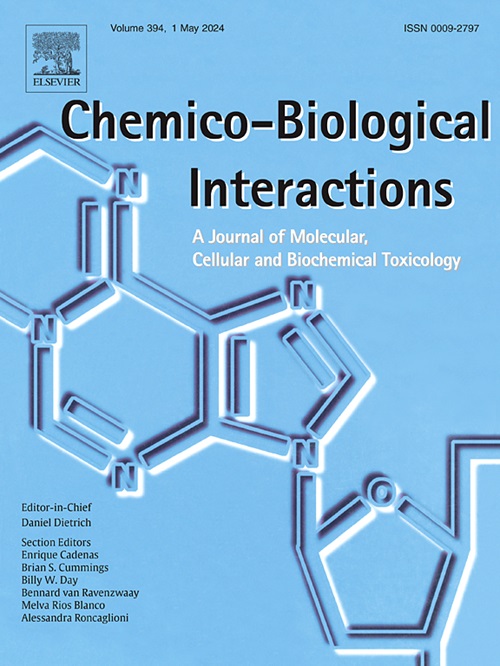Mechanism of ferroptosis in hypoxia-induced pulmonary vascular remodeling in hypoxia pulmonary hypertension: a study based on the ACE2-Ang-(1–7)-Mas axis
IF 4.7
2区 医学
Q1 BIOCHEMISTRY & MOLECULAR BIOLOGY
引用次数: 0
Abstract
Hypoxic pulmonary hypertension (HPH) is a chronic, progressive pulmonary vascular disease caused by prolonged exposure to low-oxygen conditions. Pulmonary vascular remodeling (PVR) is a key pathological feature of pulmonary artery hypertension (PAH), primarily driven by suppressed cell death and excessive proliferation of pulmonary artery smooth muscle cells (PASMCs). Current therapies for HPH primarily focus on vasodilation rather than directly targeting PVR, highlighting the need for treatments capable of reversing VR. Ferroptosis, a recently identified form of regulated cell death, has gained attention for its potential to eliminate cancer cells; however, its involvement in PVR remains unclear. We aimed to explore whether induction of ferroptosis could suppress abnormal PASMC proliferation and mitigate hypoxia-induced PVR. In the pulmonary artery, angiotensin-converting enzyme 2 (ACE2) promotes vasodilation and inhibits PASMC proliferation, suggesting a potential therapeutic target. This study demonstrated that the expression levels of ferroptosis-related proteins-glutathione peroxidase 4 (GPX4) and solute carrier family 7 member 11 (SLC7A11)- were significantly upregulated in lung tissues and PASMCs from hypoxia-induced Sugen5416/hypoxia (SuHx) mouse models, suggesting the presence of ferroptosis resistance. Notably, ACE2 activation induced ferroptosis, whereas reduced ACE2 activity led to resistance to ferroptosis. These findings suggest that enhanced ACE2 activity may inhibit abnormal PASMC proliferation and reverse hypoxia-induced PVR, as demonstrated by both in vivo and in vitro experiments. We hypothesize that modulation of ACE2 activity influences PVR through ferroptosis regulation. This study identifies potential therapeutic targets and new research directions for the pathogenesis and treatment of HPH.
基于ACE2-Ang-(1-7)- mas轴的缺氧肺动脉高压肺血管重构中铁下垂机制研究
低氧性肺动脉高压(HPH)是一种慢性进行性肺血管疾病,由长期暴露于低氧环境引起。肺血管重构(PVR)是肺动脉高压(PAH)的一个关键病理特征,主要由抑制细胞死亡和肺动脉平滑肌细胞(PASMCs)过度增殖驱动。目前HPH的治疗主要集中在血管舒张,而不是直接针对PVR,这突出了对能够逆转VR治疗的需求。铁下垂是最近发现的一种受调节的细胞死亡形式,因其消除癌细胞的潜力而受到关注;然而,其参与PVR的情况尚不清楚。我们的目的是探讨诱导铁下垂是否可以抑制PASMC异常增殖并减轻缺氧诱导的PVR。在肺动脉中,血管紧张素转换酶2 (ACE2)促进血管舒张,抑制PASMC增殖,提示一个潜在的治疗靶点。本研究表明,缺氧诱导的SuHx小鼠模型肺组织和PASMCs中,与铁中毒相关的蛋白-谷胱甘肽过氧化物酶4 (GPX4)和溶质载体家族7成员11 (SLC7A11)的表达水平显著上调,提示存在铁中毒抗性。值得注意的是,ACE2激活诱导铁下垂,而ACE2活性降低导致对铁下垂的抗性。这些结果表明,体内和体外实验均证实,增强ACE2活性可抑制PASMC异常增殖,逆转缺氧诱导的PVR。我们假设ACE2活性的调节通过铁下垂调节影响PVR。本研究为HPH的发病机制和治疗确定了潜在的治疗靶点和新的研究方向。
本文章由计算机程序翻译,如有差异,请以英文原文为准。
求助全文
约1分钟内获得全文
求助全文
来源期刊
CiteScore
7.70
自引率
3.90%
发文量
410
审稿时长
36 days
期刊介绍:
Chemico-Biological Interactions publishes research reports and review articles that examine the molecular, cellular, and/or biochemical basis of toxicologically relevant outcomes. Special emphasis is placed on toxicological mechanisms associated with interactions between chemicals and biological systems. Outcomes may include all traditional endpoints caused by synthetic or naturally occurring chemicals, both in vivo and in vitro. Endpoints of interest include, but are not limited to carcinogenesis, mutagenesis, respiratory toxicology, neurotoxicology, reproductive and developmental toxicology, and immunotoxicology.

 求助内容:
求助内容: 应助结果提醒方式:
应助结果提醒方式:


